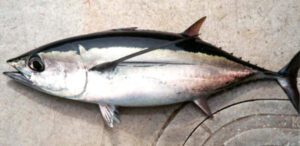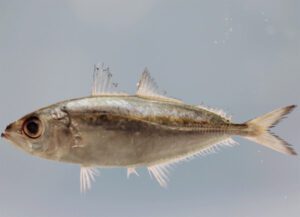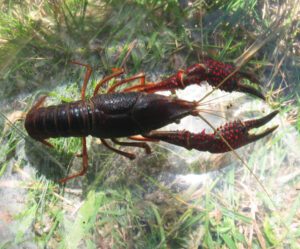Kampachi fish is a popular choice in Japanese cuisine, and it is well known for its firm, flavorful flesh. It is often enjoyed in sushi and sashimi. The fish is tasty and popular for its rich, buttery texture and slightly sweet taste. Along with Japan, it is also common in many other countries around the world.
Kampachi is actually a species of predatory ray-finned fish in the family Carangidae (the jacks and pompanos). It is mainly found in temperate, subtropical, and tropical seas around the world. The fish can be cooked in many different ways. Some most popular ways for enjoying this fish are sushi and sashimi, grilled, ceviche and in soups and stews.
Kampachi is rich in nutrients and it provides several health benefits. It can help to improve heart health by reducing inflammation and lowering cholesterol levels. It also helps to improve memory and cognitive functions. It is a good source of vitamin D.
What is Kampachi fish?
The Kampachi is a popular fish that belongs to the jack family. It is popular and well known for its firm, and tasty meat. The fish is typically seen either alone or in small to moderate sized schools. These fish generally inhabit both the seafloor and open water. They often live near reefs, deep offshore caves, drop-offs, rocky outcrops, and deep seaward reefs. They occasionally enter into coastal bays. The juvenile Kampachi are rarely spotted far out at sea, where they find shelter among floating algae (like Sargassum and various debris). The scientific name of these fish is Seriola dumerili.

What are the other names of Kampachi fish?
Kampachi fish is also known by some other names such as greater amberjack, allied kingfish, great amberfish, greater yellowtail, jenny lind, Sea donkey, purplish amberjack, reef donkey, rock salmon, sailors choice, yellowtail, and yellow trevally.
Characteristics
The Kampachi fish has distinctive physical characteristics. Their body is streamlined, torpedo-shaped and the upper part of the body is usually dark blue or greenish-blue. The sides are silver, and fins are often pale, yellowish color. Their head is pointed and somewhat conical, and the mouth is large and slightly hooked.
They have two dorsal fins, the first one is piny and the second one is softer and extends towards the tail. Their pectoral fins are located on the sides of the fish. The pelvic fins are pointed just behind the pectoral fins, and the anal fin is situated on the underside of the fish, towards the tail. And their tail is deeply forked. The Kampachi fish have large, and round eyes which are typically dark in color. Their body is covered with small and smooth scales. And their skin is relatively smooth and sleek.
Size and weight
Average body length of the mature fish range between 60 cm to 1 meter, and in some cases they can become large. And average body weight of the Kampachi fish is typically between 5 to 15 kg. Although, some fish can reach up to 30 kg.
Diet
The Kampachi fish has a varied diet. Their diet mainly consists of small fish, squid, and crustaceans. Although, in the early stage these fish may feed on plankton. They are very active and aggressive feeders, and they actively chase and hunt their prey in the wild.
Behavior
The Kampachi fish are known for their schooling behavior. They often swim in groups, and their group can number from a few individuals to several hundreds. They are very active predators and they typically hunt small fish, squid, and cephalopods. They are seasonal migrators, and they change their habitat depending upon water temperature, availability of food, and breeding needs.
Reproduction
The Kampachi fish typically spawn in specific locations and times of the year. In the wild, they typically migrate to spawning grounds. Their spawning usually occurs in warmer waters. The fish release their eggs into the open ocean. They are pelagic spawners. Female Kampachi release their eggs into the water column and the males release sperm to fertilize the eggs.
Lifespan
Average lifespan of the Kampachi fish is around or up to 15 years.
Uses
The Kampachi fish is mainly used for food. It is very tasty and popular in many cultures and cuisines.
Cooking and recipes
The Kampachi fish can be cooked in many different ways. Some common and popular recipes and cooking ways are:
Sushi and sashimi: For preparing Kampachi sushi, slice the fish into thin pieces and serve atop rice. And sashimi is thinly sliced raw fish served without rice. Simply slice the fish into thin, even pieces and serve with soy sauce, wasabi and pickled ginger.
Grilling: First, season the Kampachi fish with salt and pepper. Preheat your grill to medium-high heat. Place the Kampachi fillets or steaks on the grill and cook for about 3-4 minutes per side. And serve the grill with a side of steamed rice and vegetables.
Pan-searing: First, season the Kampachi fillets with salt and pepper. You can also coat them lightly with flour or cornstarch for a crispier texture. Heat the skillet over medium-high heat and add a small amount of oil. Then add the Kampachi fillets, once the oil is hot. And cook for 2-3 minutes per side and serve. Pan-seared Kampachi pairs well with a variety of side dishes. It pairs well with sautéed vegetables, mashed potatoes, or a light salad. You can add a squeeze of lemon or a splash of soy sauce to enhance the flavor.
Nutrition
The Kampachi is a highly nutritious food and it provides several health benefits. A 100 grams serving provides:
- Calories: Around 130-150 kcal
- Protein: About 25-28 grams
- Saturated Fat: Less than 1 gram
- Omega-3 Fatty Acids: Roughly 0.5-1 gram
- Cholesterol: Approximately 60-70 mg
- Sodium: About 60-70 mg (values can vary depending on preparation and seasoning)
- Vitamin D: Around 5-10% of the daily recommended value (varies by source and fish diet)
- Vitamin B12: Roughly 10-15% of the daily recommended value
- Selenium: About 30-40% of the daily recommended value
- Iodine: Varies
Health Benefits
As the Kampachi fish is highly nutritious, so it provides several health benefits. It supports healthy metabolism and can help with weight management by promoting satiety. It is rich in omega-3 fatty acids and is beneficial for heart health, and improving brain functions. It has anti inflammatory effects and it can help to reduce chronic inflammation and lower the risk of conditions like arthritis and inflammatory bowel disease. Consumption of Kampachi fish also supports healthy thyroid function.
Taste
The Kampachi fish has a mild, slightly sweet flavor, and doesn’t taste very fishy. It has a rich buttery texture that feels smooth and nice to eat (especially when served raw in sushi or sashimi).
Price
It is very tough for us to tell the exact price of Kampachi fish. Because exact price depends on numerous factors such as location, season, fish condition or freshness. On average, you can expect the price of fresh fish between $20 to $30 per pound. But the frozen fish are less expensive. And the sushi grade fish can be more expensive, typically ranging between $30 to $40 per pound.
Where to buy Kampachi fish near me?
You can purchase the Kampachi fish from your local seafood markets, supermarkets, restaurants, and online seafood retailers.
Frequently Asked Questions
How to cook Kampachi fish?
You can cook Kampachi fish in many different ways. Some most common and popular cooking ways are grilling, and pan-searing. You can also enjoy this fish in sushi and sashimi.
Where to buy Kampachi fish?
You can buy Kampachi fish from your local market, seafood stores, supermarkets, restaurants, and online seafood retailers.
What does Kampachi fish taste like?
The Kampachi fish has a mild, slightly sweet flavor. It has a rich buttery texture that feels smooth and nice to eat.






